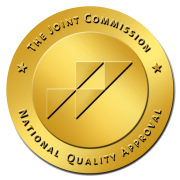Drug and Alcohol Abuse, The Addiction Crisis – SAMHSA
 Substance use/misuse and addiction represent a significant and substantial public health challenge. Data from the 2014 National Survey on Drug Use and Health (NSDUH) reveal that an estimated 27.0 million Americans aged 12 or older were currently illicit drug users (defined as using any of the following in the past 30 days: Marijuana/hashish, cocaine/crack, heroin, hallucinogens, inhalants, or non-medical use of prescription-type psychotherapeutics such as pain relievers, tranquilizers, stimulants, and sedatives) and 16.3 million were heavy drinkers (defined as drinking five or more drinks on the same occasion on five or more days in the past 30 days). Approximately 6.5 million people aged 12 and older reported currently using psychotherapeutics non-medically.
Substance use/misuse and addiction represent a significant and substantial public health challenge. Data from the 2014 National Survey on Drug Use and Health (NSDUH) reveal that an estimated 27.0 million Americans aged 12 or older were currently illicit drug users (defined as using any of the following in the past 30 days: Marijuana/hashish, cocaine/crack, heroin, hallucinogens, inhalants, or non-medical use of prescription-type psychotherapeutics such as pain relievers, tranquilizers, stimulants, and sedatives) and 16.3 million were heavy drinkers (defined as drinking five or more drinks on the same occasion on five or more days in the past 30 days). Approximately 6.5 million people aged 12 and older reported currently using psychotherapeutics non-medically.
According to the 2014 NSDUH, 21.5 million Americans aged 12 or older had a substance use disorder in the past year. Among them, 14.4 million Americans had dependence or abuse of alcohol but not illicit drugs, while another 4.5 million had dependence or abuse of illicit drugs but not alcohol, and 2.6 million had dependence or abuse of both alcohol and illicit drugs. People with alcohol or illicit drug dependence or abuse were defined in the 2014 NSDUH as meeting the diagnostic criteria specified in the Diagnostic and Statistical Manual of Mental Disorders, Fourth edition (DSM-IV).
The Affordable Care Act and new mental health parity protections are expanding mental health and substance abuse treatment benefits to 60 million Americans. Despite this historic expansion of health insurance coverage and other advances, too many Americans are not benefiting from treatment services. Based on the 2014 NSDUH data, although 21.5 million people aged 12 or older met the DSM-IV criteria for alcohol or illicit drug dependence or abuse, only an estimated 2.3 million received substance use treatment in the past year.
Drug poisoning (overdose) was responsible for about 47,000 deaths in the U.S. in 2014 (now the latest year for which national data are available). Furthermore, substance misuse (to include excessive alcohol use) and related disorders contribute to injury and chronic illness, lost productivity, family disruptions, and increased transmission of sexually and injection-related infectious diseases; are associated with higher rates of domestic violence and child abuse; and prevent many individuals from realizing their full potential.

